
‘“Beauty can be seen in all things, seeing and composing the beauty is what separates the snapshot from the photograph.”
Matt Hardy
Do you ever wonder why you like some photos more than others? Why some make you smile or feel emotional or tell you a story and others leave you cold?
You may be thinking that it's the photographer’s inner artistic genius (and don’t get me wrong - there are some absolutely outstanding and exceptional photographers out there) but often the difference between a strong photo and a bad one is in understanding some common photographic composition rules.
And these rules are all about translating how our brains process visual information, especially when you take a rich and multidimensional world we see and translate it into a small flat rectangle.
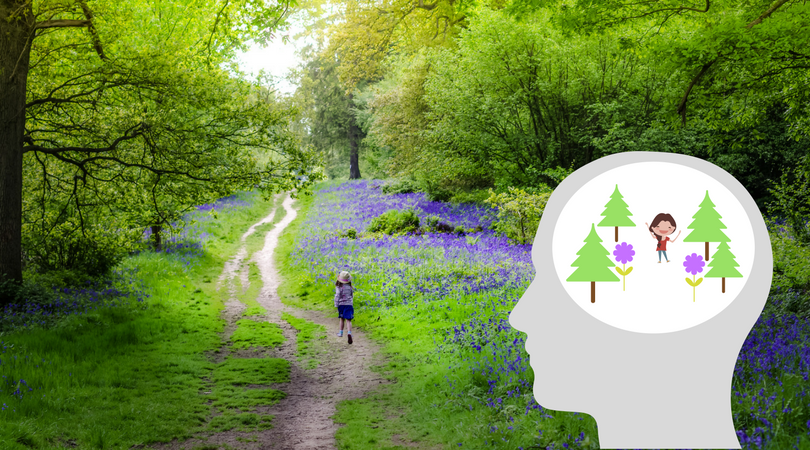
Composition is one of my absolutely favourite subjects. Once you dig into it, so many things make sense, suddenly you start noticing things around you that you haven’t really seen before. It’s also one of those sessions in our course that the students absolutely adore - we see the figurative lightbulbs switching on and things just clicking into place. Love, love, love it.
So we’ll start you off with a simple rule which, if you haven’t looked into photographic composition before, will make your photo better instantly:
Do not centre the head in the frame
We see this type of photo over and over with our students’ early photos, and I completely understand why.
You pick up a camera, look through the viewfinder at your child and instinctively look at the most important part of your child ( so to speak - they’re all pretty vital) - the head. We’ve established earlier that when you look into your child’s eyes, most of the background melts away, is unimportant to you. So you instinctively put those in the centre of the frame. You probably aren’t even thinking about it - you just do it. To add to that, often ( though not always) the centre of the screen will have a little point or square or something there ( focus indicator) - so with this tiny visual prompt, it’s a no brainer. Seems logical?
Except, visually speaking, the centre is a very weak point.
Here is what happens when your brain looks at any image at all - it tries to decode the meaning behind it, the story. And I don’t mean it in a sense of - ‘once upon the time…’. It’s more about - ‘what am I looking at here? what’s happening?’. Photographs that catch your eye are the ones that make your eyes stop on an image - either because you saw something there that was action / mystery / emotion / question / indication of where they are / what they’re doing. THAT’s the story.
Two elements of composition:
To make that story come to life, photographers use 2 elements - the subject and the space around them - so called ‘negative space’ - that one is there to help the eyes ‘glide’ around, help us see what’s going on and where. You may not consciously notice it but it matters.
But when you place your subject centrally, a lot of that space is often simply wasted.
Your brain doesn’t get any help with what it should be looking at.
Immediately it discounts the space above - nothing going on there, you’ve wasted that space in the frame. With equal amount of space on both sides of the child, neither really matters. We’re not captivated. The use of space is a waste.
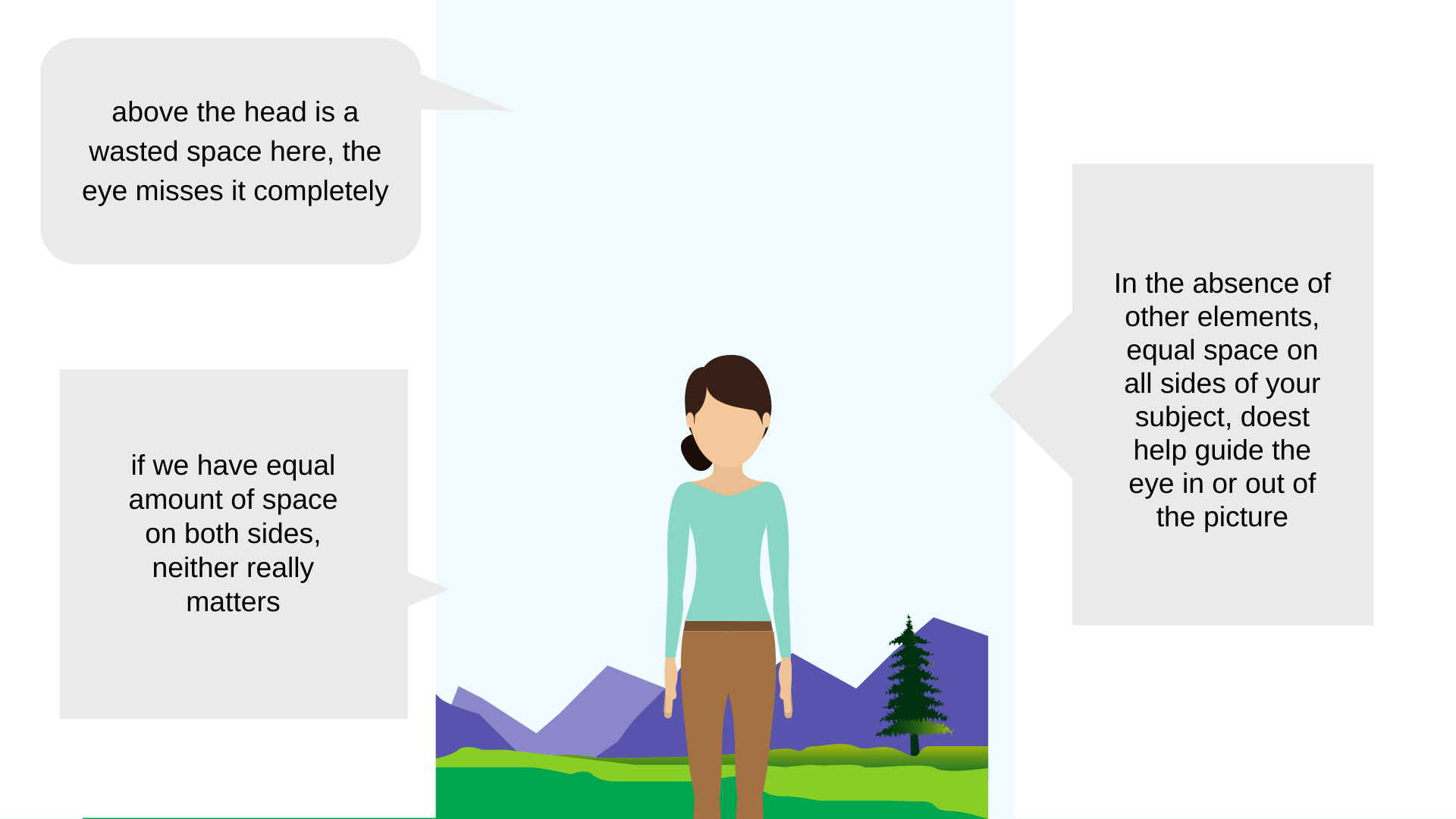
Let's look at an example - compare these two images below. In the first one the child's head is positioned in the centre. BOOOOOOOORING.
In the second we left a bit more space to the side to let that space 'lead' us towards the child. Because we lifted the head up ( figuratively, within the frame), we could also include the whole of her body and make the activity more clear.
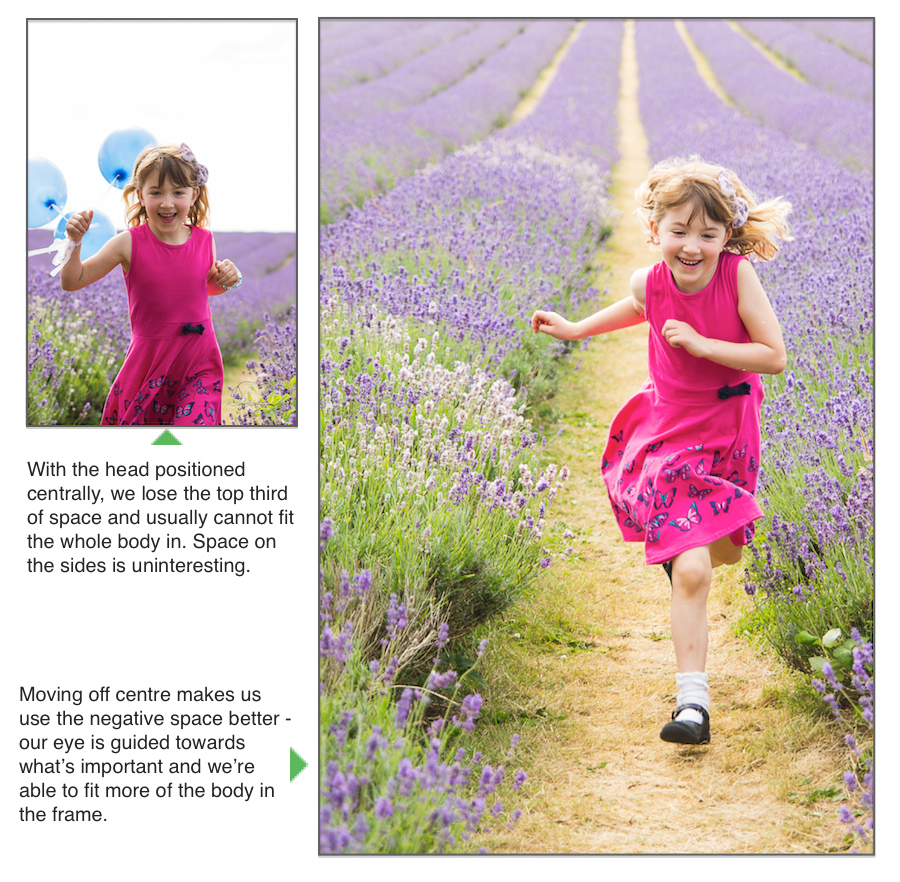
But if I only want a Head and shoulders kind of photo? Does off centre still work?
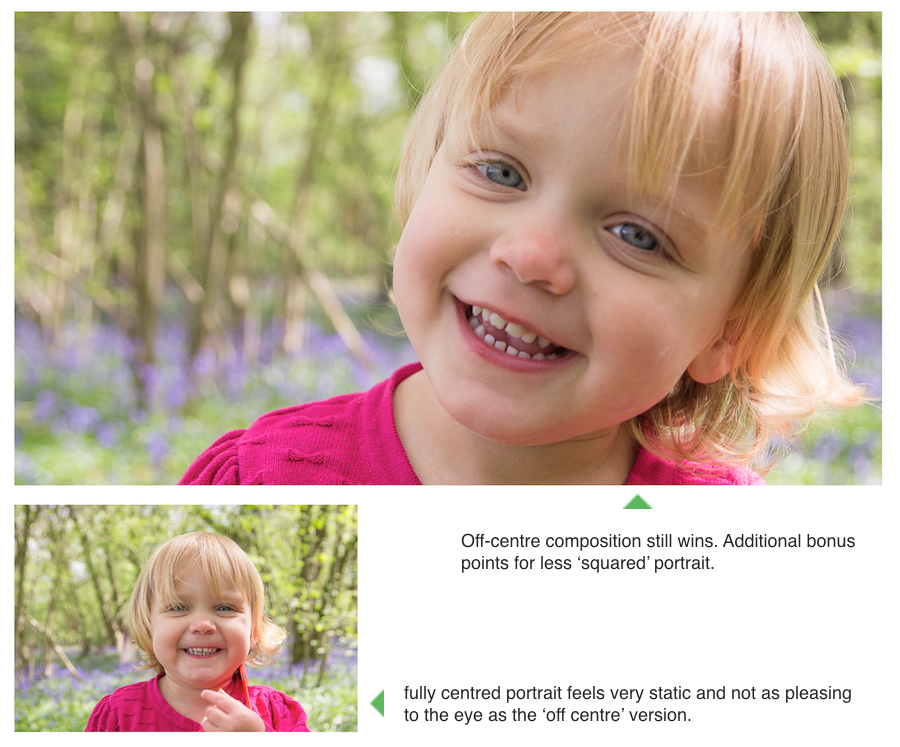
When we teach composition, we always want to explain to you why something matters rather than just blindly having you follow a rule. I think it's important to understand that all that we do when it comes to photographic composition has its root in how our brains understand the visual information in front of us. That's why I wanted yout understand WHY it's often better to not just use the centre of your frame for composition, rather thank just telling you not to do it.
Which leads me now to a composition rule that many of you have heard about, but perhaps haven't considered before WHY it was advocating keeping things off centre - the Rule of Thirds:
Rule of Thirds
Rule of Thirds follows what we described above but it further refines it. It's one of the most well known composition rules in photography.
Rule of thirds : if you were to split your frame into three equal parts horizontally and vertically ( see below), your subject will be the strongest if you place them at the intersection of those divider lines.
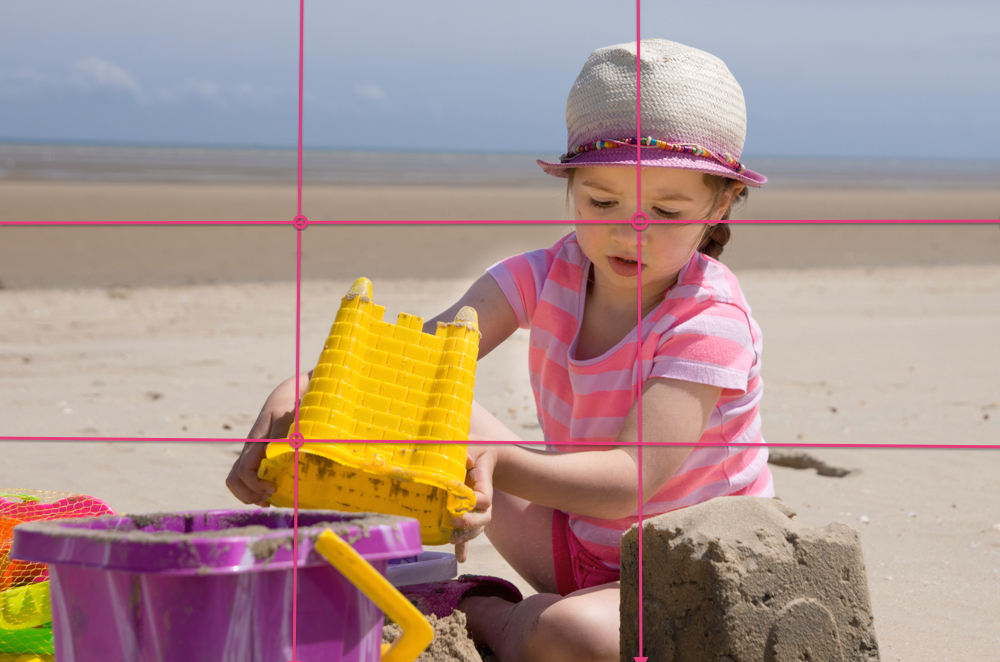
It’s an easy enough rule to memorise and it takes us away from centering the subject. The way the space works in this composition makes it easy for the eye to glide over the picture and stop at what’s important.
It follows how our brain likes to process the visual. And we see it in much more than photography. Next time you watch TV, notice how few people are placed bang in the middle of the screen, even if they’re alone in the frame.
Does it matter which of the 4 points I pick?
It may do in some compositions - if your child is running somewhere it may be sensible to leave more space in the frame in from of them than behind, if someone is looking in a particular direction, maybe leave more space towards where they're looking, but by and large, if you use this as your starting point, you’ll already have improved.
Does it mean I can NEVER ever place my child in the centre of the frame again?
Not at all. There are plenty of reasons why a more central composition might work best in some cases - where there is strong symmetry, where the space around actually frames it in that way, where there are other elements in the frame that lead the eye towards the centre. This is just one of the many photography rules - and sometimes the best photographs happen when you break them. Like I said - we have plenty more on the subject in our full course!
Examples from our students:


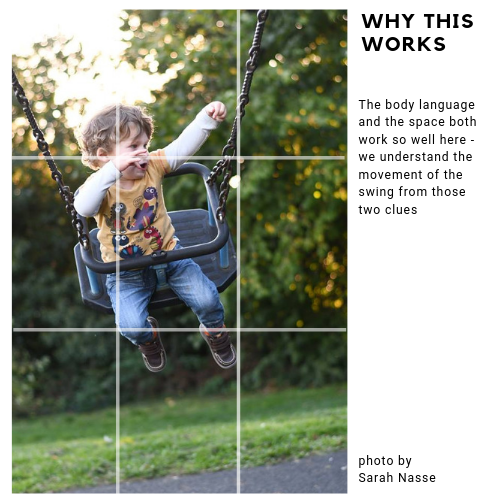





Lesson 2 Challenge
Now that you know the centre may not always be best, try capturing some of your images with the Rule of Thirds in mind. Think about where in the 4 strong points to place your subject and test out both vertical and horizontal compositions.
Good luck!